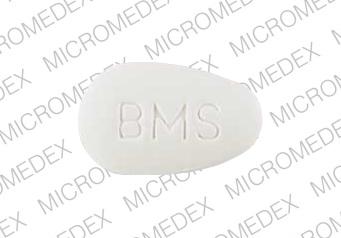Gatifloxacin Dosage
Applies to the following strengths: 200 mg; 400 mg; 10 mg/mL; 5%-200 mg/100 mL
Usual Adult Dose for:
- Inhalation Bacillus anthracis
- Anthrax Prophylaxis
- Bronchitis
- Cystitis
- Gonococcal Infection - Uncomplicated
- Pneumonia
- Pyelonephritis
- Urinary Tract Infection
- Sinusitis
- Skin or Soft Tissue Infection
- Tuberculosis - Active
Usual Pediatric Dose for:
Additional dosage information:
Usual Adult Dose for Inhalation Bacillus anthracis
Mass casualty treatment or prophylaxis of inhalational anthrax: 400 mg orally once daily for 60 days
The Working Group on Civilian Biodefense has suggested that, based on in vitro studies, gatifloxacin could be used for postexposure prophylaxis or treatment of inhalational anthrax if ciprofloxacin and doxycycline are not available. This use is not approved by the FDA.
Usual Adult Dose for Anthrax Prophylaxis
Mass casualty treatment or prophylaxis of inhalational anthrax: 400 mg orally once daily for 60 days
The Working Group on Civilian Biodefense has suggested that, based on in vitro studies, gatifloxacin could be used for postexposure prophylaxis or treatment of inhalational anthrax if ciprofloxacin and doxycycline are not available. This use is not approved by the FDA.
Usual Adult Dose for Bronchitis
Acute bacterial exacerbation of chronic bronchitis: 400 mg orally or IV once a day for 5 days depending on the nature and severity of the infection
Usual Adult Dose for Cystitis
400 mg orally or IV once, or 200 mg once a day for 3 days
Usual Adult Dose for Gonococcal Infection - Uncomplicated
Urethral gonorrhea in men and endocervical or rectal gonorrhea in women: 400 mg orally or IV as a single-dose treatment
Usual Adult Dose for Pneumonia
Community-acquired: 400 mg orally or IV once a day for 7 to 14 days
Usual Adult Dose for Pyelonephritis
Pyelonephritis or complicated UTI: 400 mg orally or IV once a day for 7 to 10 days, depending on the nature and severity of the infection
Usual Adult Dose for Urinary Tract Infection
Pyelonephritis or complicated UTI: 400 mg orally or IV once a day for 7 to 10 days, depending on the nature and severity of the infection
Usual Adult Dose for Sinusitis
400 mg orally or IV once a day for 10 days
Usual Adult Dose for Skin or Soft Tissue Infection
Uncomplicated infection: 400 mg orally or IV once a day for 7 to 10 days
Usual Adult Dose for Tuberculosis - Active
400 mg IV or orally once a day
May be given in combination with at least 3 other active drugs for treatment of multi-drug resistant TB, or when the patient is intolerant of first-line agents. AFB smear and culture should be monitored monthly.
Duration: Treatment for TB should generally continue for 18 to 24 months, or for 12 to 18 months after culture results are negative.
Usual Pediatric Dose for Otitis Media
Recurrent or nonresponsive otitis media (studies, n=128, n = 254):
6 months or older: 10 mg/kg orally once daily (maximum 600 mg)
Renal Dose Adjustments
CrCl 39 mL/min or less: 400 mg orally or IV once, followed by 200 mg orally or IV once a day
Liver Dose Adjustments
No adjustment recommended in patients with moderate hepatic impairment (Child-Pugh B). Data not available for severe hepatic impairment.
Precautions
Recommended doses should not be exceeded due to increased risk of QT interval prolongation. Discontinue use and initiate appropriate therapy if signs of QT interval prolongation, seizures, hypoglycemia, hyperglycemia, neuropathy, or hypersensitivity occur.
Patients should avoid direct or indirect exposure to sunlight and artificial UV light during and for several days after treatment. The drug should be discontinued if signs of phototoxicity occur (e.g., sunburn, redness, burning, itching, rash, blistering).
Patients should be advised to discontinue the drug, rest, and avoid exercise if they experience pain, inflammation, or rupture of a tendon.
Clostridium difficile associated diarrhea (CDAD) has been reported with almost all antibiotics and may potentially be life-threatening. Therefore, it is important to consider this diagnosis in patients who present with diarrhea following quinolone therapy. Mild cases generally improve with discontinuation of the drug, while severe cases may require supportive therapy and treatment with an antimicrobial agent effective against C difficile. Hypertoxin producing strains of C difficile cause increased morbidity and mortality; these infections can be resistant to antimicrobial treatment and may necessitate colectomy.
The patient should be well hydrated or instructed to drink plenty of water to avoid crystalluria.
Renal, hepatic, and hematopoietic function should be monitored periodically during prolonged therapy.
Dosage adjustments are recommended for renally impaired patients. Caution and monitoring is recommended for elderly patients, who may be at a greater risk of adverse reactions due to declining renal function.
Gatifloxacin may cause dizziness or lightheadedness. Patients should be advised to avoid driving or engaging in other tasks requiring mental alertness and coordination until they know how the drug affects them.
The safety and effectiveness of gatifloxacin in pediatric patients less than 18 years have not been established. Cartilage erosion and arthropathy have been reported in studies with juvenile animals.
Dialysis
400 mg orally or IV as an initial dose, followed by 200 mg orally or IV once a day to be administered following hemodialysis or continuous ambulatory peritoneal dialysis
Other Comments
Gatifloxacin may be taken without regard to meals. Patients should be advised to drink plenty of fluids.
Oral doses should be administered at least 4 hours before or 8 hours after iron-, zinc-, aluminum-, or magnesium-containing compounds (e.g., antacids, sucralfate, mineral supplements, buffered didanosine).
Intravenous doses of gatifloxacin must be administered over a minimum of 60 minutes.
Water for injection should not be used as a diluent for concentrated gatifloxacin for injection because it results in a hypotonic solution.
More about gatifloxacin
- Check interactions
- Compare alternatives
- Reviews (1)
- Side effects
- During pregnancy
- Drug class: quinolones and fluoroquinolones
- Breastfeeding
Patient resources
Other brands
Related treatment guides
Further information
Always consult your healthcare provider to ensure the information displayed on this page applies to your personal circumstances.


